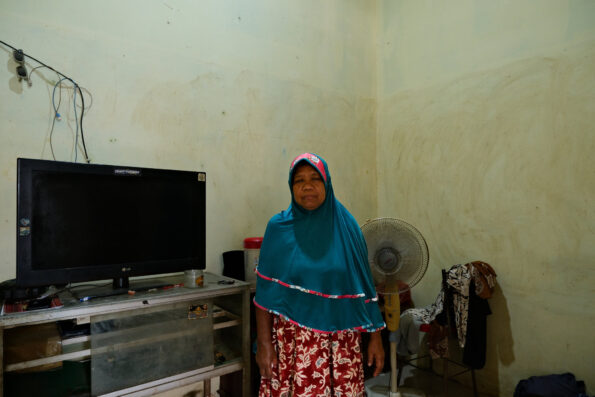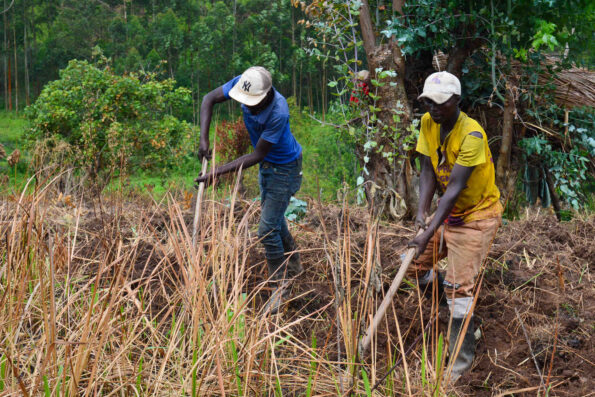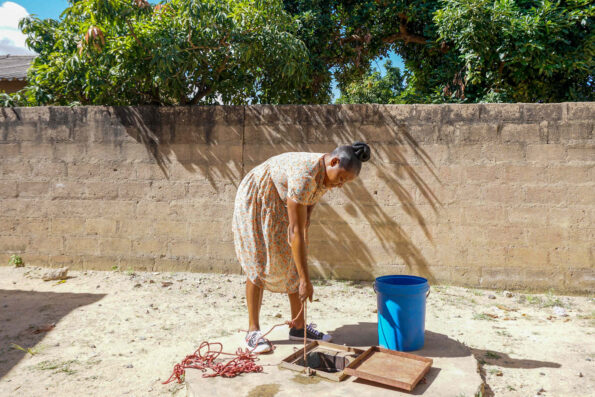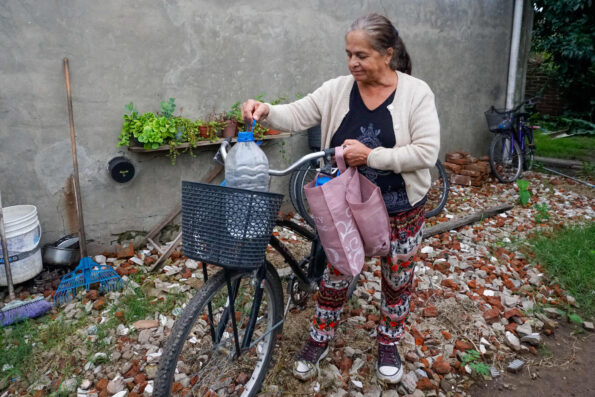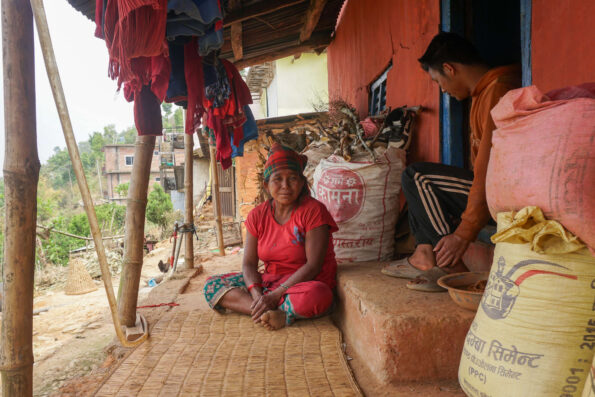
Sunita Neupane, GPJ Nepal
Devraj Rai poses for a portrait after carrying supplies along the trail to the Pathibhara Devi temple. For more than a decade, Rai has carried pilgrims unable to complete the trek to the sacred temple, a livelihood now under threat as Limbu community protests erupt over a proposed cable car project that would reduce foot traffic and impact porters like Rai.
PHUNGLING, NEPAL — In the misty shadows of the Himalayas, Devraj Rai has spent a decade as guardian of ancient pathways, leading pilgrims to the sacred Pathibhara Devi temple along treacherous mountain paths and through lush forests. For him, shouldering pilgrims’ burdens from the 2,700-meter foothills to the towering 3,794-meter peak transcends mere work. It is a spiritual calling and an act of worship.
But this way of life came under threat when a cable car project was launched in the Pathibhara region, sparking protests by the people of the Limbu community, who view it not as progress but as desecration of their sacred lands.
The Limbu community’s six-year battle against the 3 billion Nepali rupee (US$21.8 million) Pathibhara cable car project, carving through Taplejung district in eastern Nepal, escalated into violent confrontations, with clashes in late February leaving more than 20 people injured.
“The project exemplifies a broader trend of displacement affecting indigenous communities in Nepal,” says Kailash Rai, a researcher at Martin Chautari, a Kathmandu-based nonprofit. “The resistance is part of a larger movement by indigenous peoples, who have frequently seen development come at the expense of their land and cultural heritage.”






This conflict mirrors a global pattern affecting indigenous communities who, despite representing just 6% of humanity, safeguard a quarter of Earth’s land. A large-scale study shows that close to 60% of indigenous peoples’ lands across the world are threatened by industrial expansion.
In Nepal, multiple development projects, including the cable car, the Tanahun hydropower project, and a water-transfer project between the Sunkoshi and Marin rivers for irrigation, have resulted in displacement of rural communities, destroyed ancestral lands, disrupted traditional livelihoods, and damaged environments crucial to those communities’ ways of life.
The latest site, called Pathibhara by Hindus, is known as Mukkumlung (“stone of power”) in Limbu tradition. Khagendra Fembu Limbu, coordinator of the Joint Struggle Committee, says the Limbu oral tradition Mundhum mandates protection of nature and culture. While not opposed to all development, he says the Limbus insist it should occur “only at the foot of the mountain” to preserve their sacred site.
Approximately 300,000 Hindu devotees trek hours annually to the Pathibhara temple, says Aamir Maden, mayor of Phungling. The completed cable car would reduce a daylong trek to a 10-minute ride, transporting 1,000 pilgrims hourly.



“The way the state understands land differs from indigenous perspective. The state says it will control it; tribal people say they will enjoy it,” says Ram Gurung, lecturer at Tribhuvan University in Kathmandu.
Historically, the Limbu people of Nepal practiced kipat, a traditional, communal land tenure and governance system. In 1964, the Land Act abolished kipat, transferring all lands to the state-controlled raikar system. Since then, the community has struggled to find its political footing in Nepal’s landscape, their integration hindered by educational barriers and the sudden loss of their traditional governance structures.
The cable car project has brought to the fore the historical collective grievance.
Cable cars symbolize Nepal’s ambitious efforts to capitalize on tourism, which accounted for more than 6% of the nation’s gross domestic product in 2023. In 2018, Nepal’s National Planning Commission designated the project as a priority, approving the removal of over 10,000 trees across 4.97 hectares (more than 12 acres) of forest with a 30-year usage permit.
Beyond environmental impact, the project threatens the livelihood of more than 600 porters, 30 small businesses and 1,700 homes, says Rajendra Mahato, of the Pathibhara Area Development Committee.



Among those affected is Thag Bahadur Karki, 61, who built the Chandrama Hotel along the pilgrimage route over 13 years. He now faces accusations of land encroachment while the cable car threatens to eliminate the foot traffic his business depends on.
Despite the government forming a negotiation committee on Feb. 2, led by Home Affairs Joint Secretary Prem Prasad Bhattarai, two rounds of talks have so far failed. Bhattarai indicates willingness to accommodate demands, and says everything is on the table, except project cancellation.
Gurung warns that once built, protective policies will eventually remove indigenous forest guardians from both their traditional roles and the forest itself.
Every night Devraj Rai’s journey to Pathibhara ends and every morning he begins again with the same hope and faith. “We are not just fighting for our profession; we are fighting to prevent the erosion of Pathibhara’s power,” he says.

